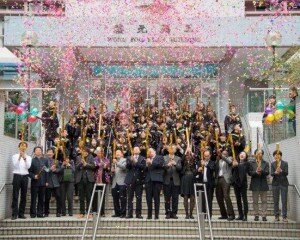I have only one more week left at the Chinese University of Hong Kong, and all the teaching matters are just about wrapped up.
I have had a fantastic time teaching Take Back the Economy with a great group of undergraduate students (with the assistance of a wonderful tutor, Helen).
And all the materials from the course are now up on the Take Back the Economy website, see https://takebackeconomy.net/?page_id=671. There are also some extra items such as information about films and related materials for teaching Take Back the Economy.
What have been some of the highlights for me?
Highlight 1. The work the students put into their case studies really impressed me, particularly the way they wove together material from the different chapters. For example, Jamie used the Community Economy Return on Investment (CEROI) (in Chapter 6) to analyse the Long Valley Eco-Paddy Rice CSA; Timothy used to Commons Identi-kit (in Chapter 5) to analyse Kibbutzim (including one where his Uncle lives), but he also incorporated issues of surviving well (Chapter 2) and distributing surplus (Chapter 3) into the Commons Identi-kit; Salom used the three themes from TBTE to analyse street hawking and how hawkers are surviving well (and taking back hawking) (Chapter 2), encountering others (and taking back markets) (Chapter 4), and commoning (and taking back the street) (Chapter 5). Their visual presentations and final reports on their case studies are in the assessment section, see https://takebackeconomy.net/?page_id=794.
You’ll also see that Timothy’s visual presentation (in Prezi) includes segments from an interview with his Uncle. Jackie also did a great interview with Angus from (a team of four young YouTubers who want to increase the political and economic awareness of young people in Hong Kong, especially coming out of the Umbrella Revolution). Her interview is embedded in her visual presentation, but you can also on YouTube.
Hope and Victor also have some wonderful interviews for their case study, the Women Workers’ Cooperative at the Chinese University of Hong Kong (CUHK). These interviews are embedded in their visual presentation (though you’ll need to be able to understand Cantonese!). But you can view a lovely of part of their 11pm to 1.30am shift working the Special Service Period in the Cooperative (CUHK requires that food outlets be open until “the wee hours”, the students help out the women workers by working this special shift so the women workers can go home and sleep. Hope and Victor signed up for the shift so they could find out more about the Cooperative for their case study).
Highlight 2. The pro-democracy Umbrella Revolution in the latter part of 2014 when a range of people, including students, occupied several major districts in Hong Kong for 79 days had a major impact on the students in the course, and it was something that we kept coming back to. For example, in the first week, we analysed the Umbrella Revolution/Occupy in terms of the diverse economy (see also https://takebackeconomy.net/?page_id=713).
In Week 6, watching Avi Lewis and Naomi Klein’s film The Take, was unlike any other experience I have had viewing this film with students. The workers in this film occupied factories in Argentina in the early 2000s, and at times they were at the barricades. In the scene when the workers are locked out of their factories and tear gassed by the police I could “hear” the resonance in the room as the students had similarly experienced being tear gassed by police. Like the workers in the film the students had first-hand experience of acting on their political commitments to occupy.
Highlight 3. In Week 9 we used the Commons Identi-kit to analyse a range of things, including the mobile classrooms set-up during the Umbrella Revolution/Occupy and regular university classes. This prompted an incredibly useful discussion about mobile phones in class—in a small class such as this it is very noticeable when students are looking at their mobile devices! So we discussed this in terms of community members assuming responsibility for and enacting care for what happens in the classroom commons. As a result, students agreed to “surrender” their phones in class (except when they needed them to research various topics). One student even thanked us for this enforced abstinence. Go the mobile free space!



Leave us a Reply